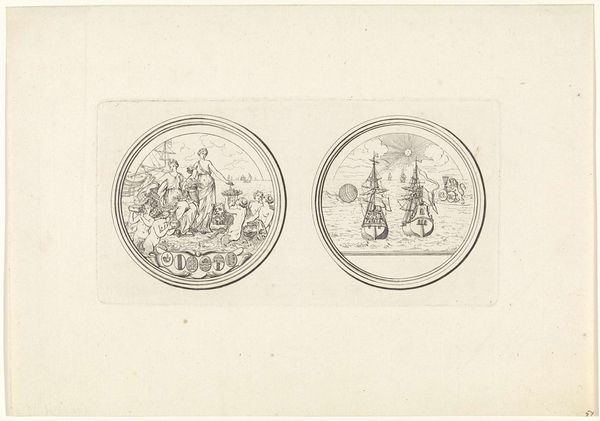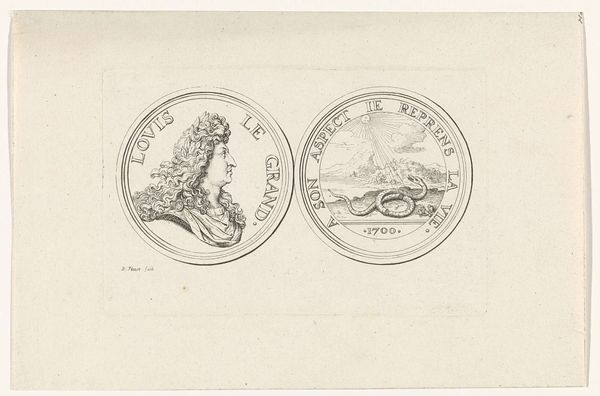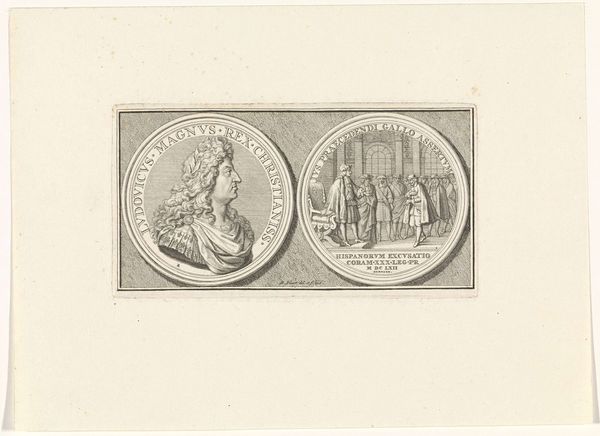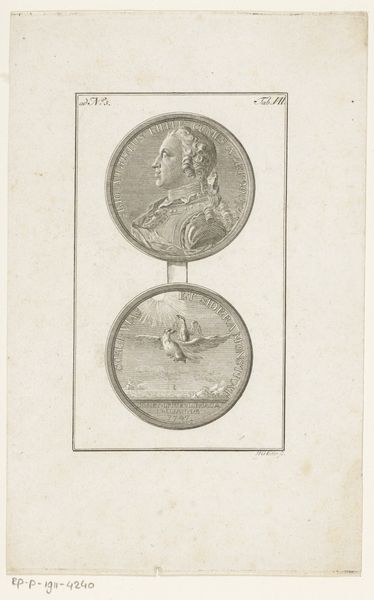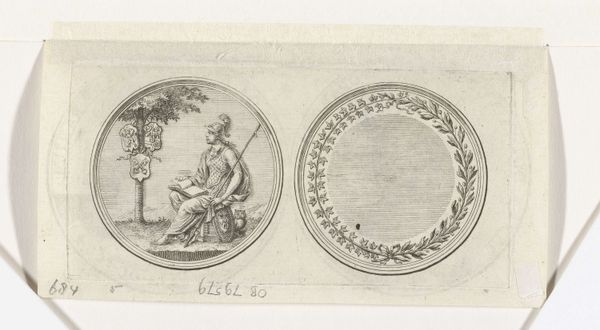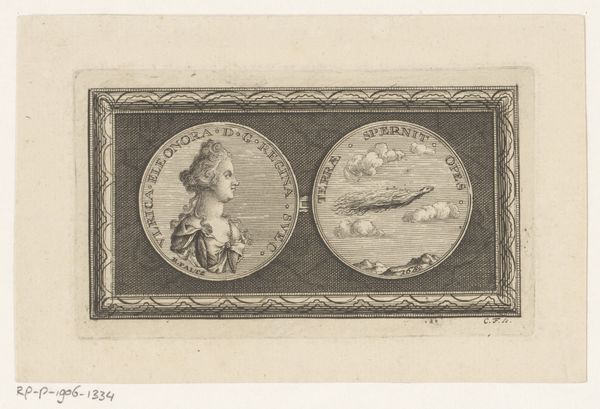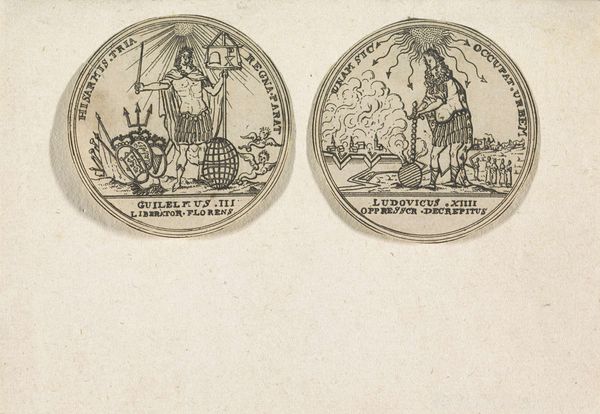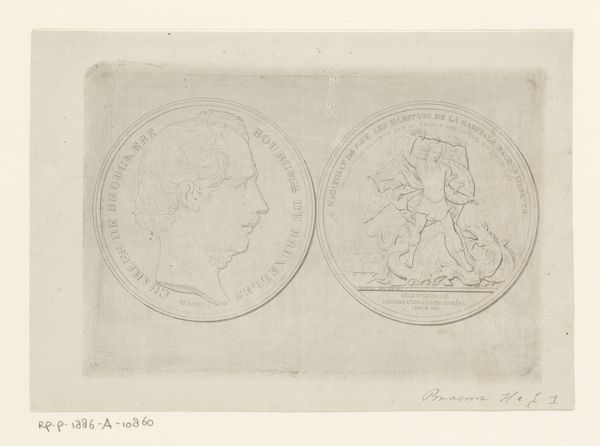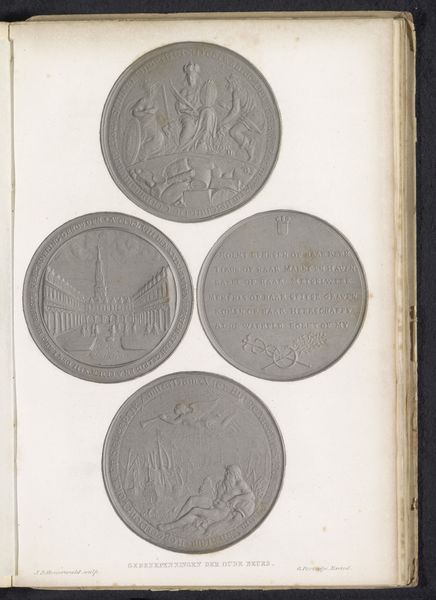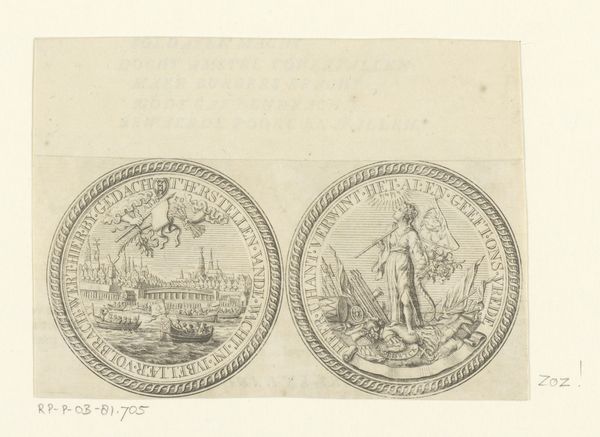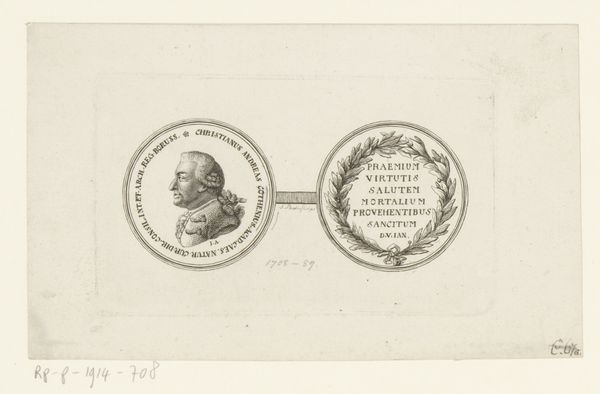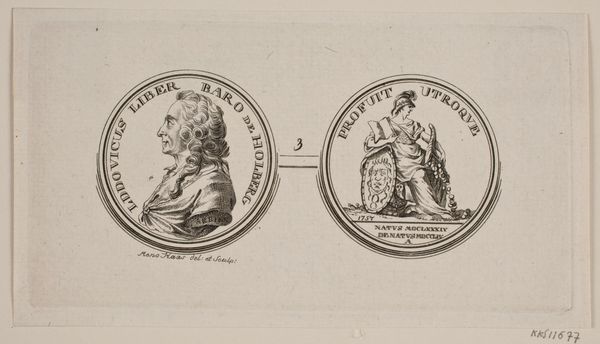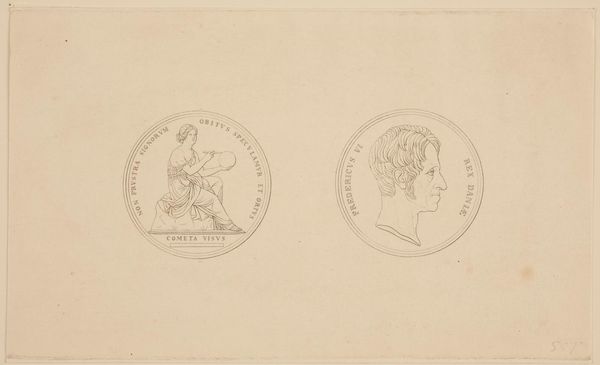
print, engraving
#
portrait
#
baroque
# print
#
old engraving style
#
history-painting
#
engraving
Dimensions: height 52 mm, width 107 mm
Copyright: Rijks Museum: Open Domain
Curator: Here we have Johann Wilhelm Meil the Younger's "Portret van Gerard van Swieten", an engraving dating back to 1756. The artist works in a Baroque style, showcasing considerable technical skill for the period. Editor: It looks like two medals side by side. On one, a stoic profile of a bewigged gentleman; the other, an allegorical scene. Overall, there's an air of restrained formality about it. Curator: Exactly. The composition adheres to classical principles: the profile medallion displays meticulous detailing in the subject's hair and clothing, creating visual texture. Semiotic codes of status are prevalent; his dress signifies power, influence, and prestige. Editor: But those visual codes also reveal power structures within 18th-century Viennese society. Van Swieten was physician to Empress Maria Theresa, yes? Someone very embedded in a nexus of imperial authority and patriarchal structure. How might his medical authority have intersected with wider control over bodies, particularly women’s bodies? Curator: Well, stepping away from the historical interpretation for a moment: in the second medallion, notice how the engraving employs symbolic figuration—the seated figure, the book, the budding tree. Together, they visually communicate the concepts of wisdom and healing. A sort of allegory for medical erudition, would you not agree? Editor: Of course. And while it is "medical erudition", that phrase subtly reminds me about what kind of power this "erudition" granted elite white men over other vulnerable demographics in society. Do we have primary sources on Van Swieten that shed light on how he wielded his influence? The work has value on its own terms, of course. Curator: True. I must say, looking at the balance of lines and shapes here gives one the sense of completeness. The precision of the engraving itself really invites closer contemplation. Editor: For sure. But for me, understanding this print deepens by considering whose stories are centered, whose are marginalized, and the very real stakes involved in those choices. Curator: A fitting closing, I would say. Each interpretation helps us consider art as a series of formal gestures as well as social texts.
Comments
No comments
Be the first to comment and join the conversation on the ultimate creative platform.
